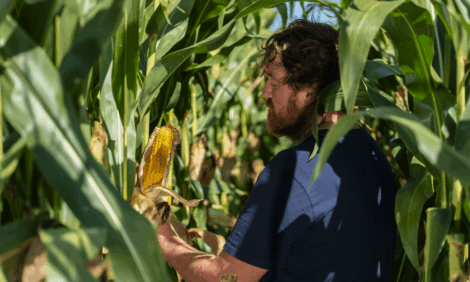



Cattle on Feed for 20 Days Longer Than 2014
The number of days that cattle are on feed has increased since grain prices slumped in 2014, but what impact has this had on economics and meat quality? Larry Corah, consultant for Certified Angus Beef LLC, explains.Some trends in the cattle industry we can predict but others surprise us - like the magnitude of the upswing in cattle prices over the past few years.
But when grain prices slumped in 2014 and cattle prices headed still higher, it shouldn’t have surprised anyone that we starting adding days on feed (DOF) to feedlot cattle.
Just how many days have we added and what has been the impact?
Noted cattle analyst Shawn Walter of Professional Cattle Consultants plots this data monthly from the millions of cattle fed by his extensive network of cooperators.
According to his recent feedlot newsletter, the longer DOF trend began last July. We added 5 to 10 to DOF in July-August, and by the first quarter of 2015, we had extended that by another 15-20 days.
You would logically expect to see a link to lighter placement weights, but it’s not there. We are placing heavier cattle on feed, and more than 30 per cent of the 2014 placements exceeded 800 pounds (lb).
As Mr Walter notes, with fed cattle prices in the $1.50-1.60/lb range and cost of gains being around $0.90/lb, the economic incentive says add as many pounds as possible.
What makes this work even better is that 75 per cent or more of those late pounds are in carcass weight, which is more profitable on the formulas and grids that account for most fed cattle marketing today.
As you would expect, this has driven carcass weights to all-new heights, with steers up 14 lb and heifers 12 lb for the year.
What are other impacts of adding days?
Well here are some things you likely did not know about longer feeding periods.
Our Certified Angus Beef feedlot database shows that for every 20 days cattle are on feed, the percentage of Choice and Prime carcasses increases 3 to 4 points.
Most of that is Choice but to a premium brand such as Certified Angus Beef the increase in acceptance rates is 2 to 3 percentage points.
At the 2015 Plains Nutrition Conference, University of Nebraska animal scientists presented an abstract on impact of longer DOF on carcass parameters and profitability. Good data on this was hard to find until now, so this is a valuable research contribution.
They allotted 114 crossbred steers to three feeding pens with one harvested at a normal finish endpoint of a half inch fat cover which turned out to be 142 DOF. A second group was fed another 21 days (163 DOF) and a third group 43 extra days (184 DOF).
The key economic impact (See Table) was the increased carcass weight, up 31 lb and 80 lb, respectively, for the two longer-fed cattle groups.
Perhaps surprisingly, quality grade increased only slightly as marbling was 31 points higher for the longest-fed cattle. But keep in mind individual genetic potential plays a big role in grade as well, and that boost in marbling suggests a bigger impact on the share of cattle grading Prime and Premium Choice.
As would be expected, yield grades were elevated, up to 31.6 per cent YG 4s and 5s for the long-fed group. But in spite of that, profitability was significantly higher for the longest-fed cattle - by more than $50 per head after all added costs and discounts were figured in.




